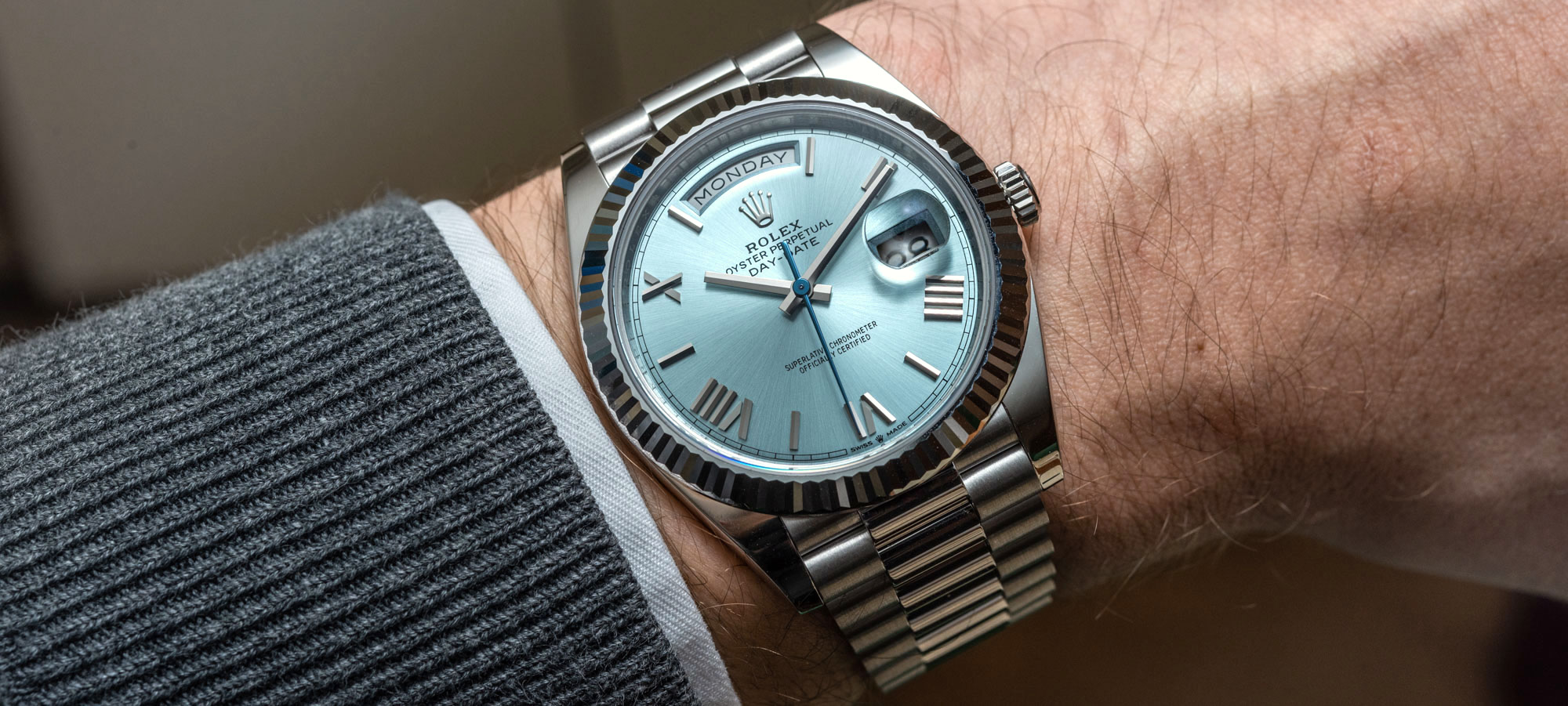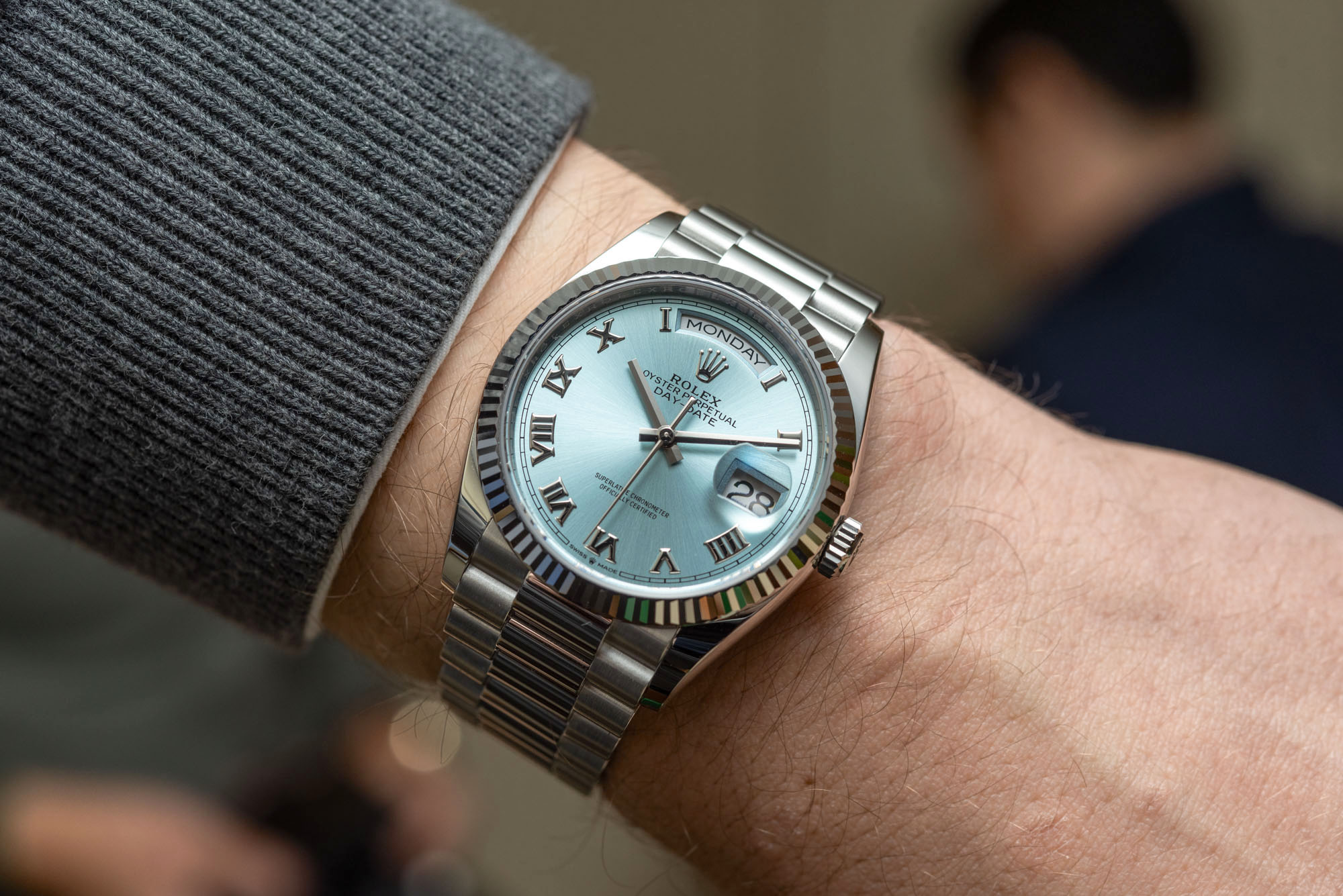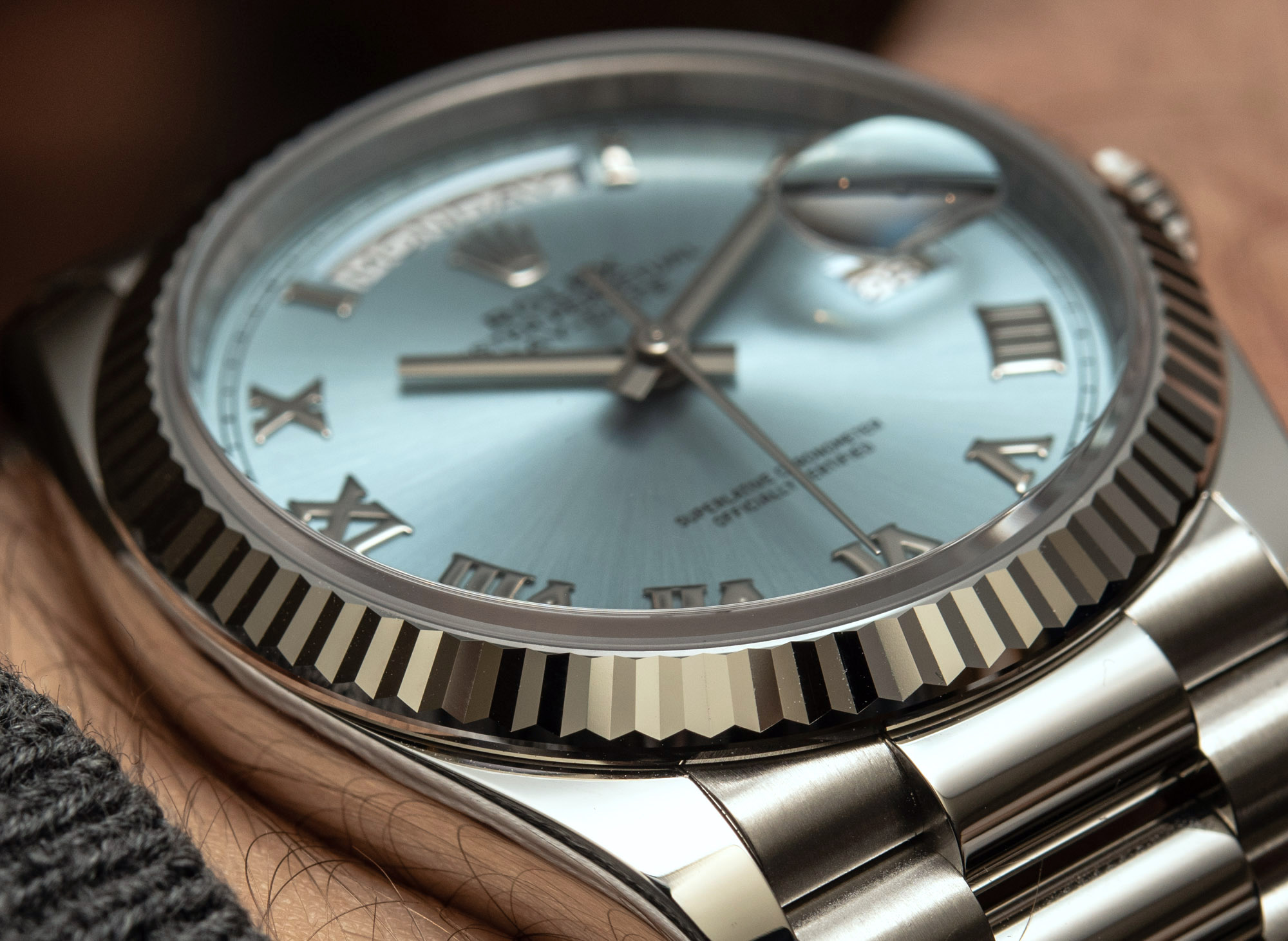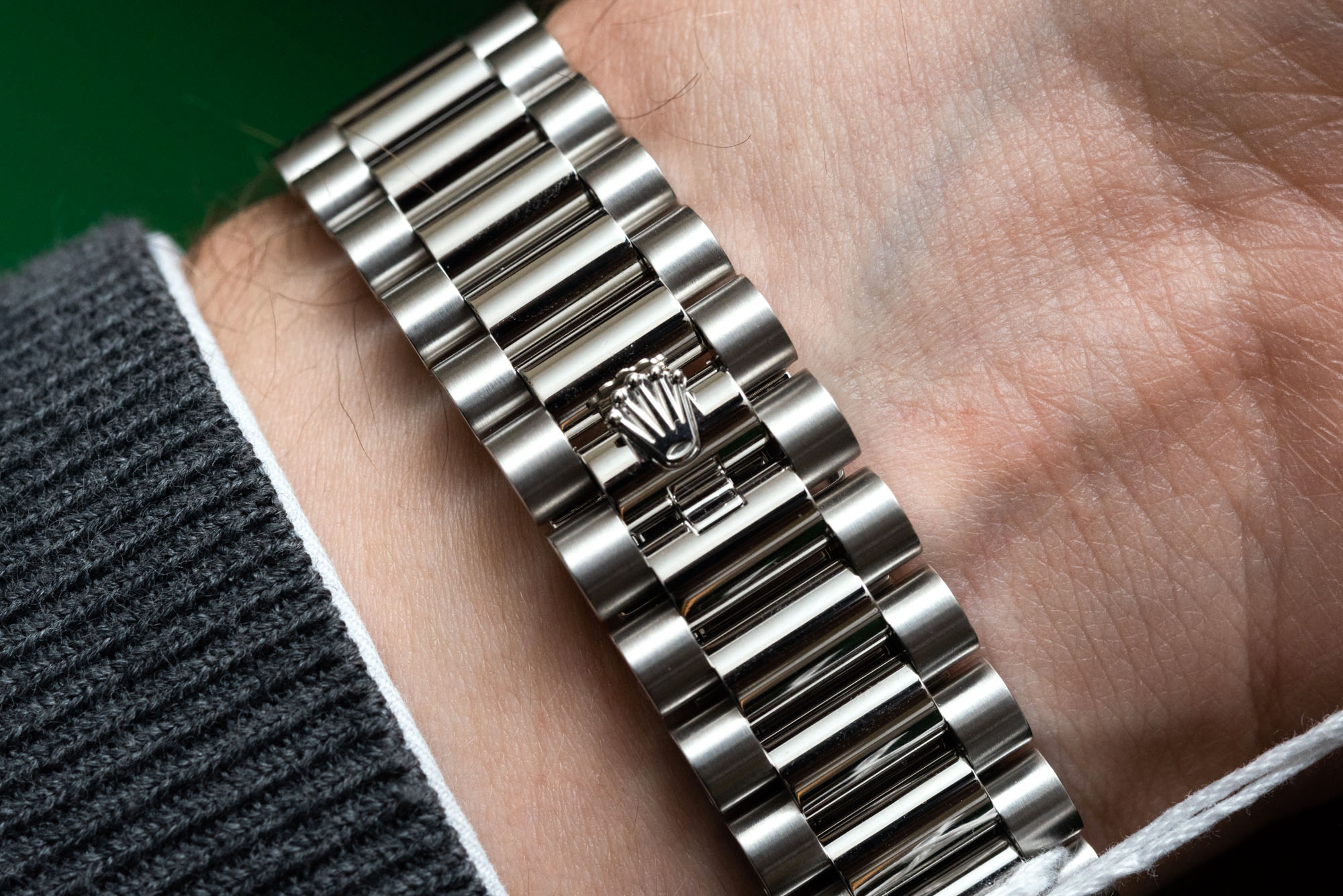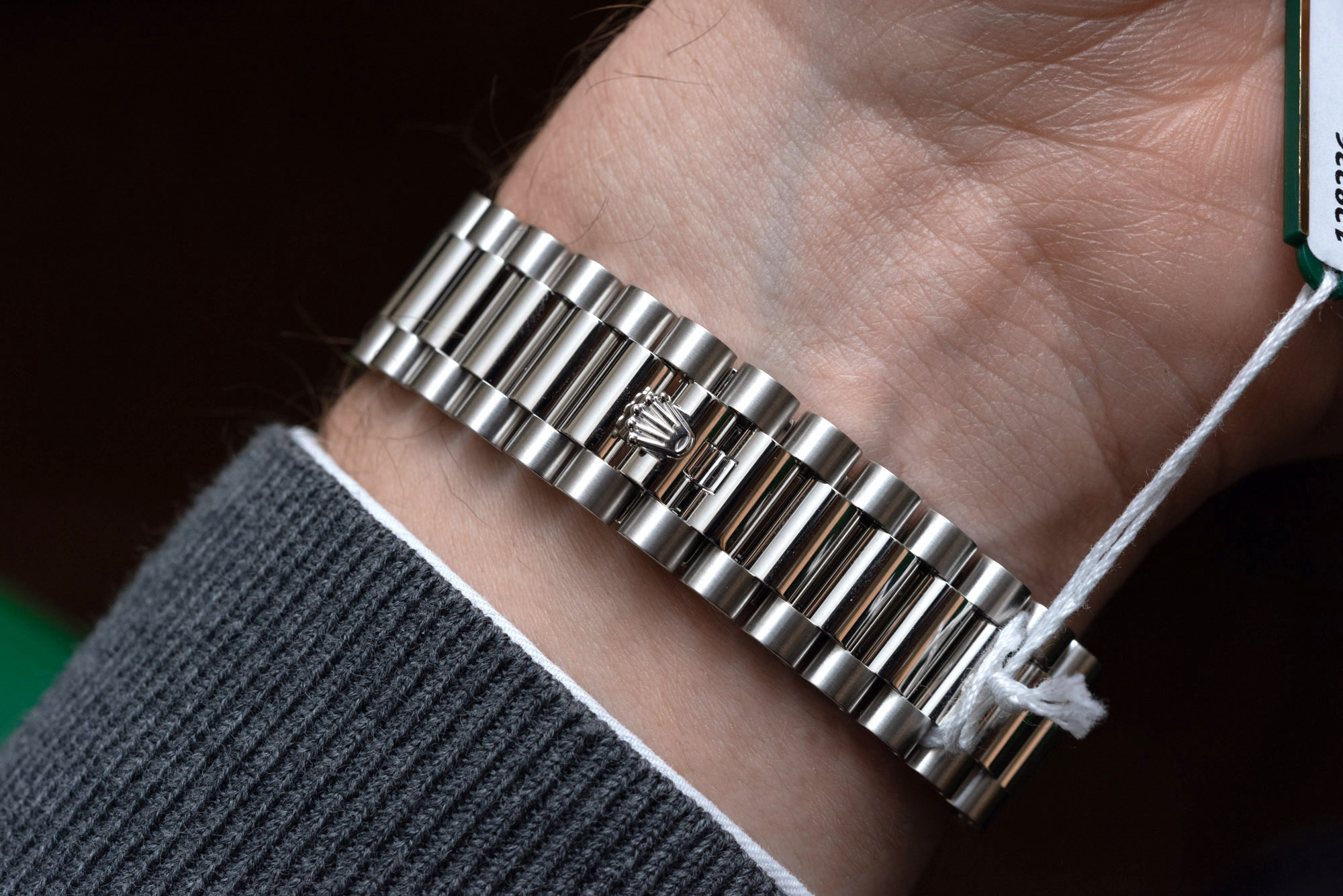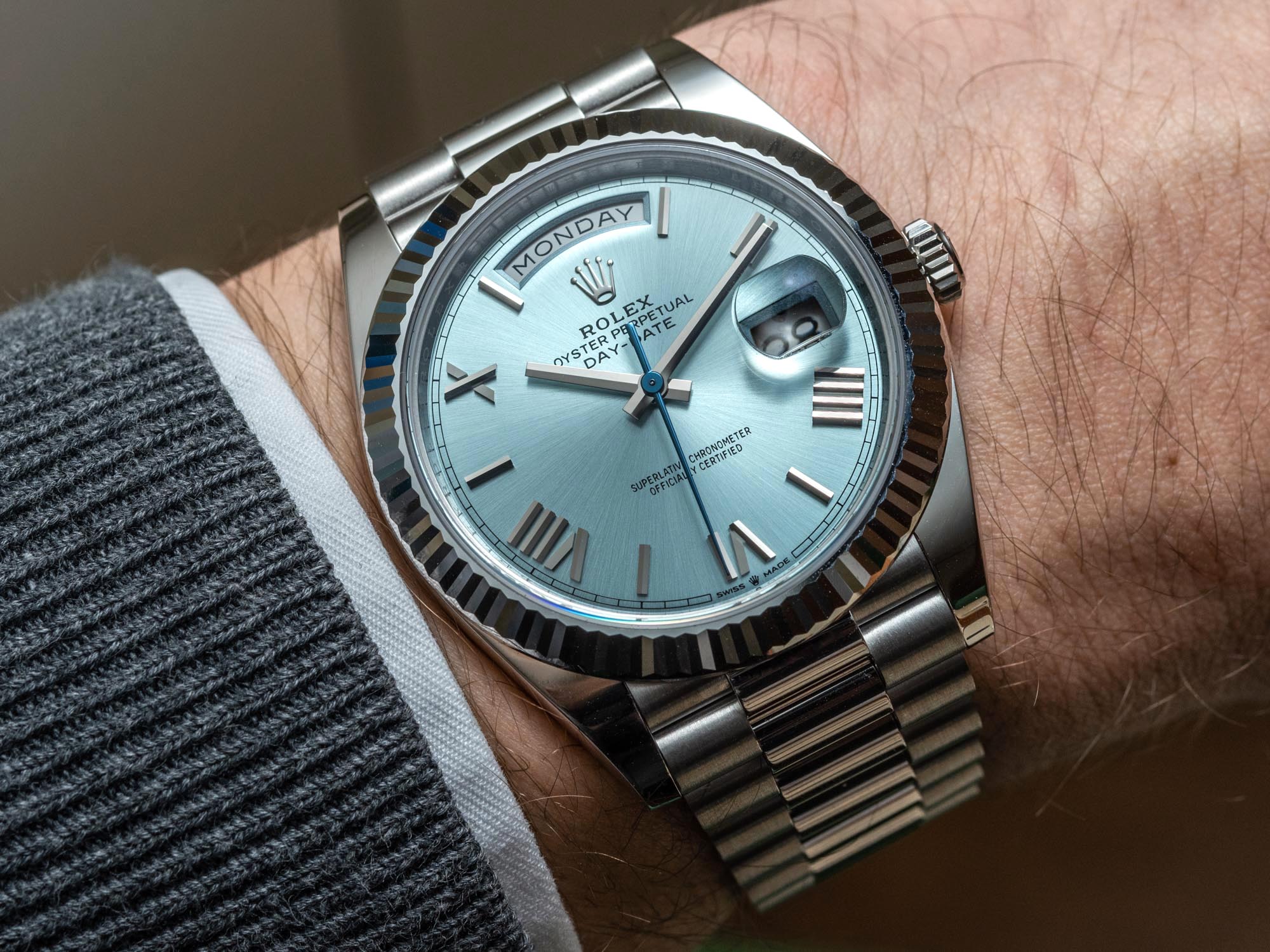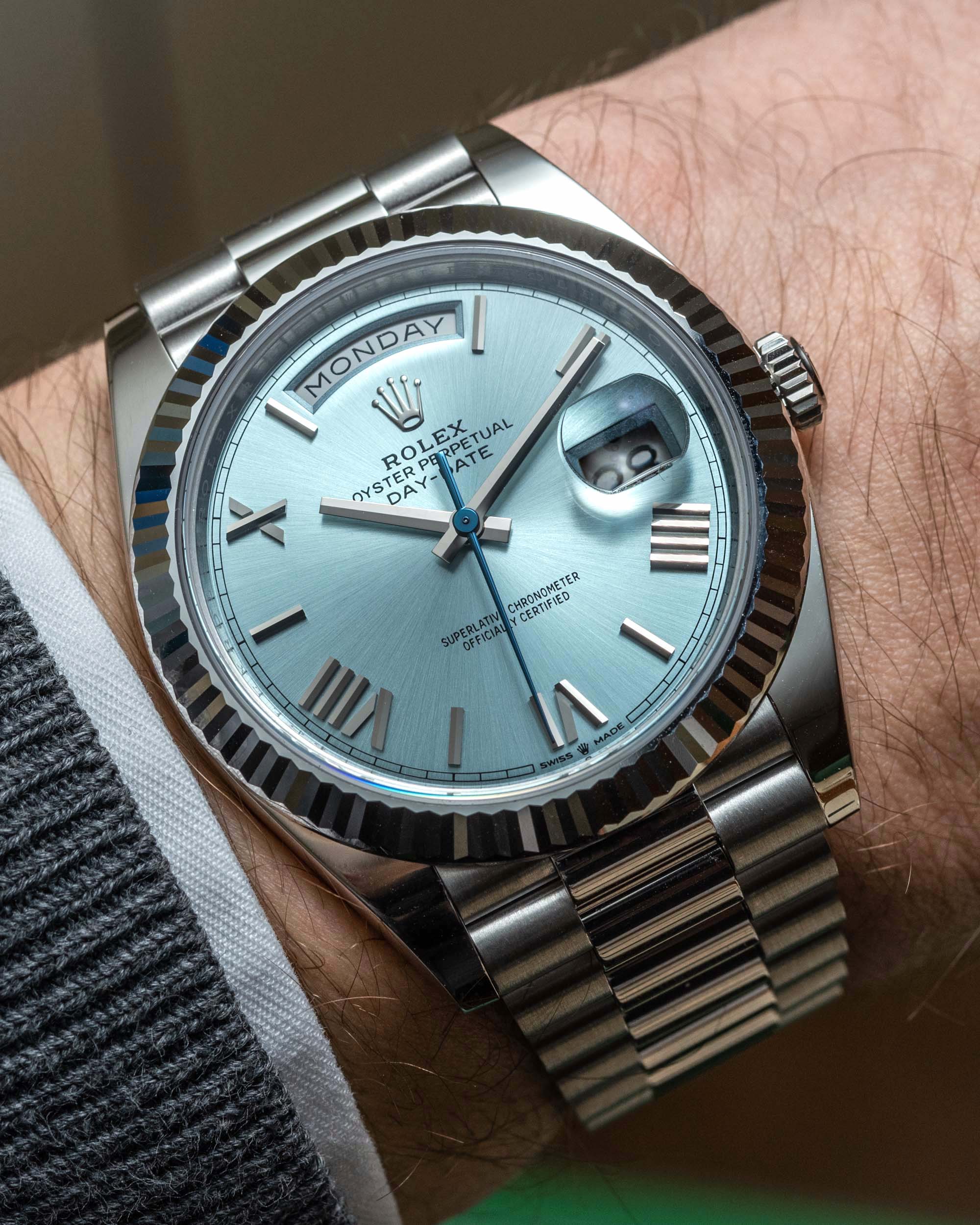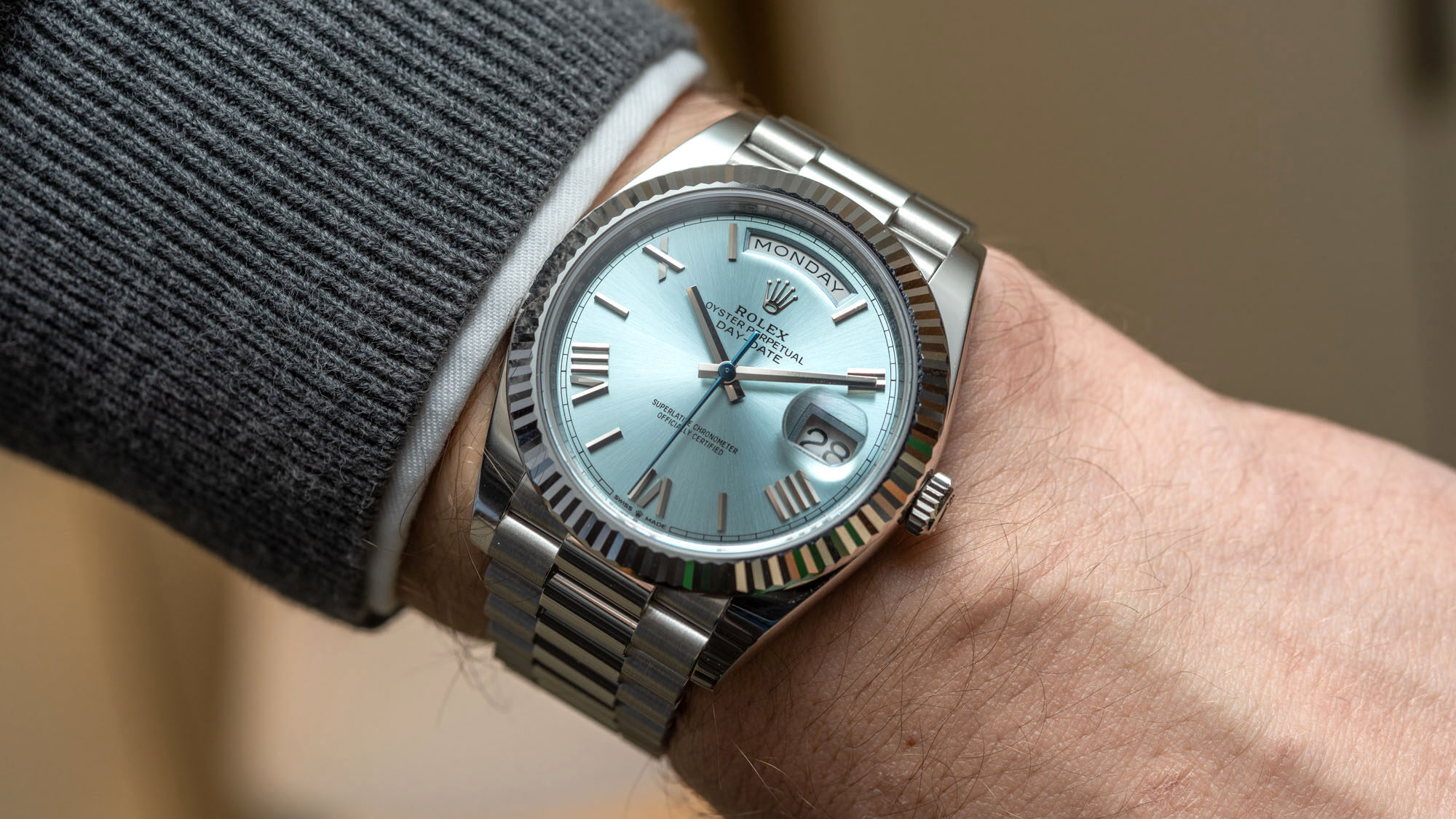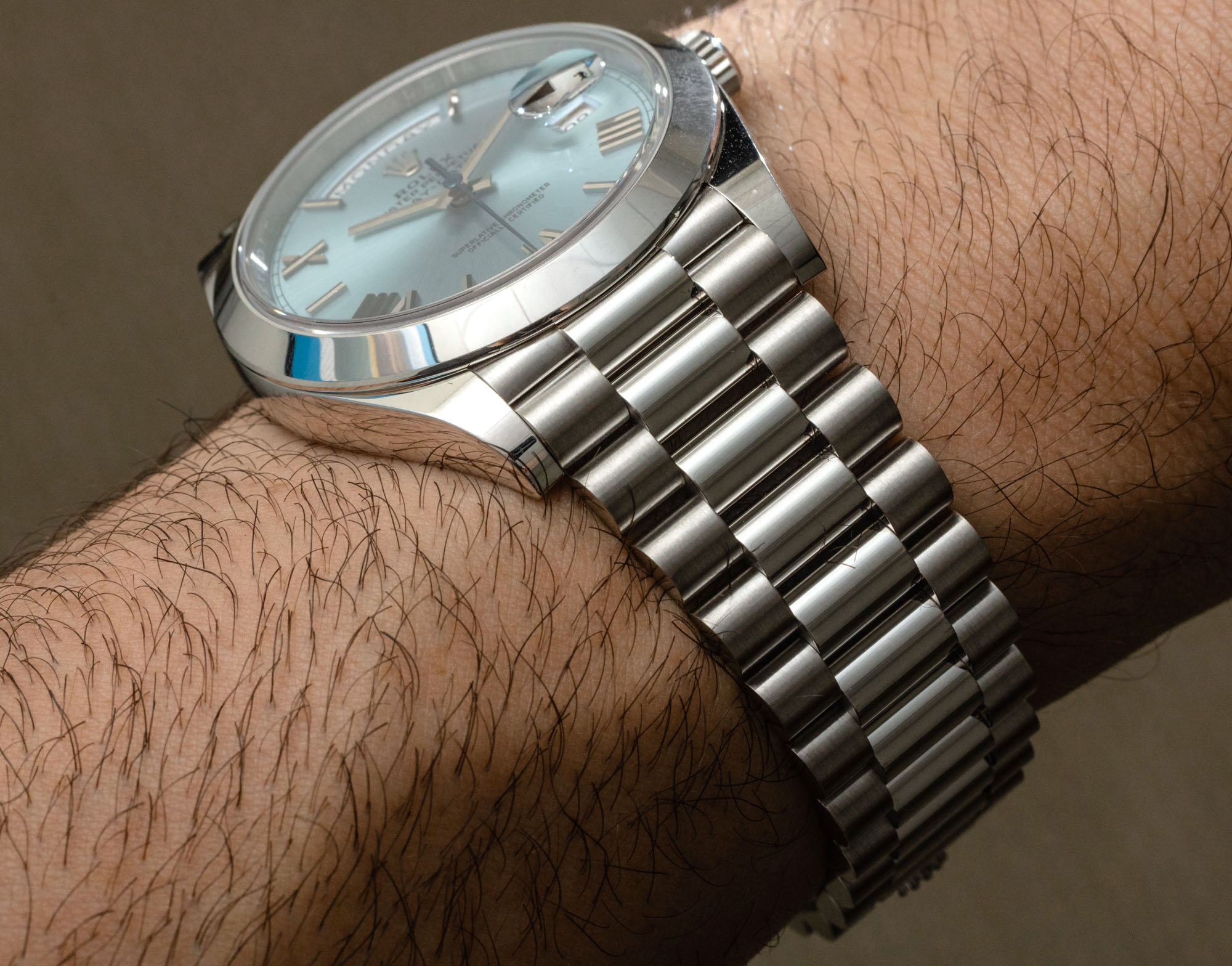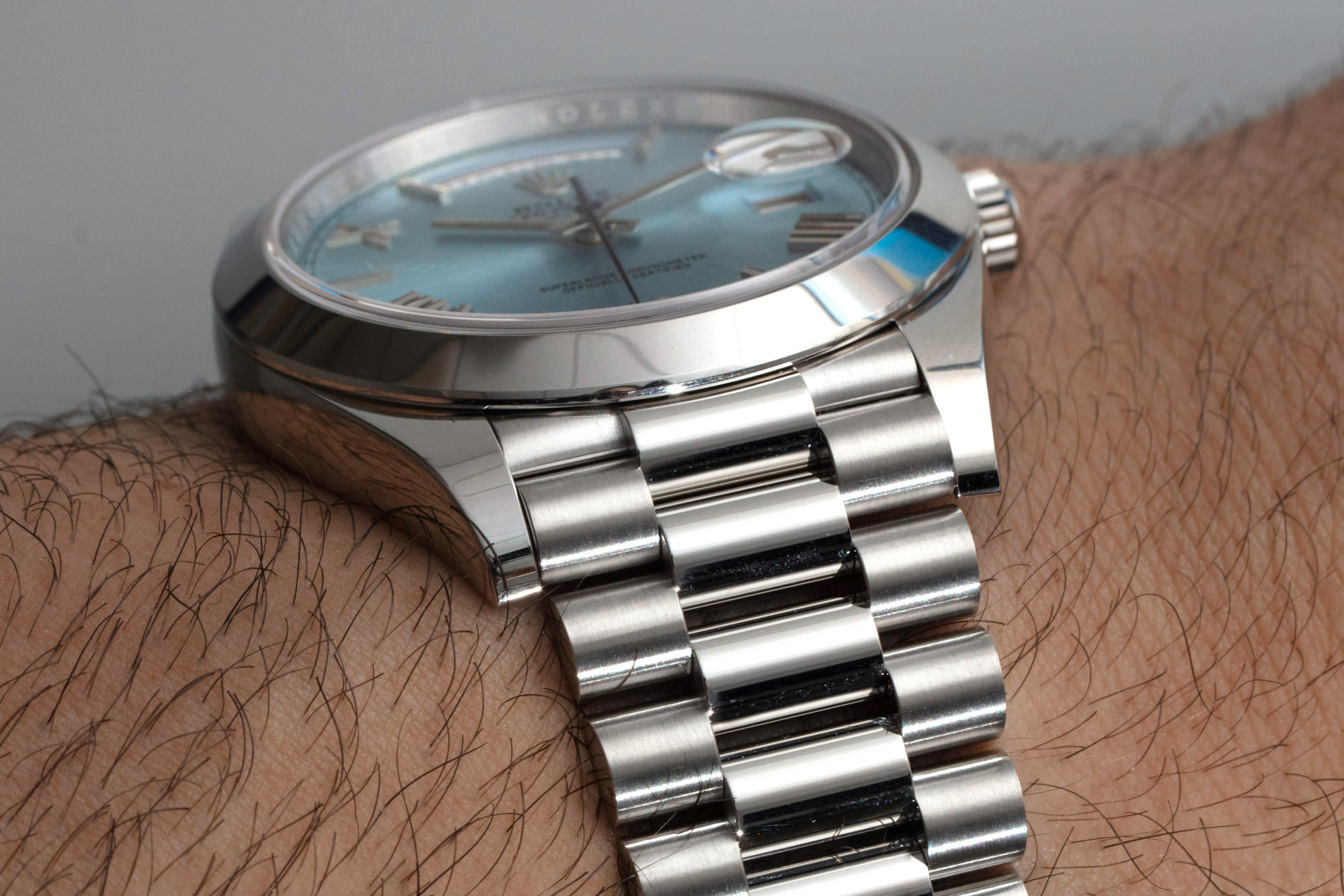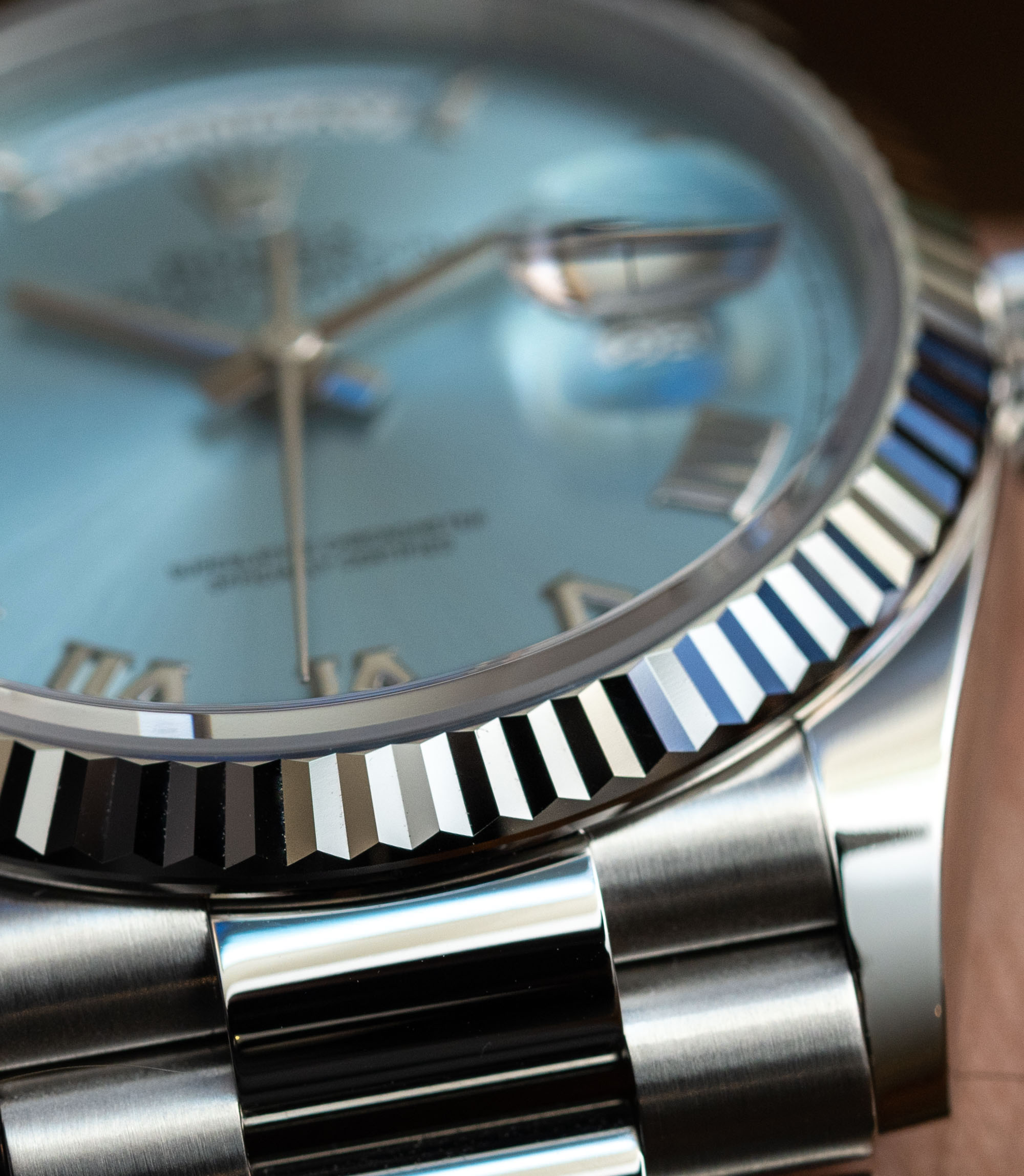
With the new-for-2022 Rolex Day-Date 36 & Day-Date 40 watches in platinum, the first-ever platinum fluted bezel debuts on “a Rolex model,” which is what Rolex likes to call its watches. Although the Day-Date remains every bit the dress watch joker card it’s ever been, it also marks the demise of a long-established Rolex design code. Let’s see what that was, revisit a bit of Rolex history, and discover how the platinum Day-Date performs with its shiny new bezel on.
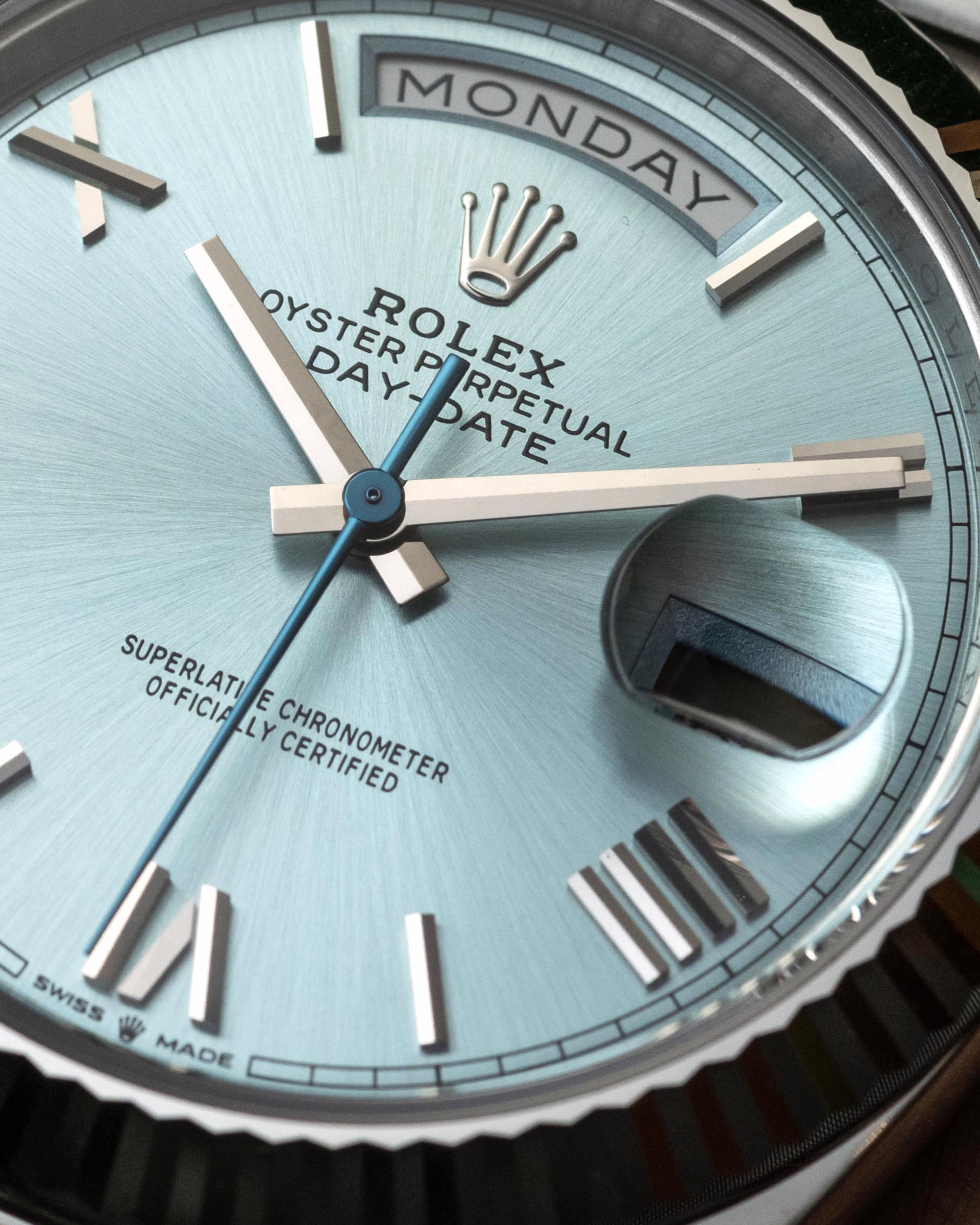
Rolex is in the fortunate position of owning long-established watch design staples, “emblematic features” that have been hard-wired into people’s brains over a long series of decades. There are some fascinating examples to consider. Rolesor, i.e., the “two-tone” color combination of steel and gold, has been around on a Rolex since the early 1930s. (The Rolesor name was trademarked in 1933). The five-piece link Jubilee bracelet looks largely unchanged since it debuted on the Datejust in 1945, as does the three-piece link Oyster bracelet that’s been around since the early 1940s. What the heck, most Rolex model lines comfortably go back 60-70 years or more into the past with largely uninterrupted lineages — again, cementing Rolex visual codes into the public consciousness.
Likewise, the fluted bezel — the precious metal external frame around the front crystal of the watch that features nearly 200 reflective facets — goes all the way back to the first Oyster case in 1926. In its more decorative form, the form we know and love today, the fluted bezel was present on the first-ever Rolex Datejust in 1945 and the first-ever Rolex Day-Date in 1956. For around 80 years, the spectacular fluted bezel has lived through many carefully revised iterations until it arrived at its current generation that is crafted with a level of precision (especially in the consistency of the flatness of its facets and the straightness of its ridges) unrivaled by any other high-volume producer of luxury watches.
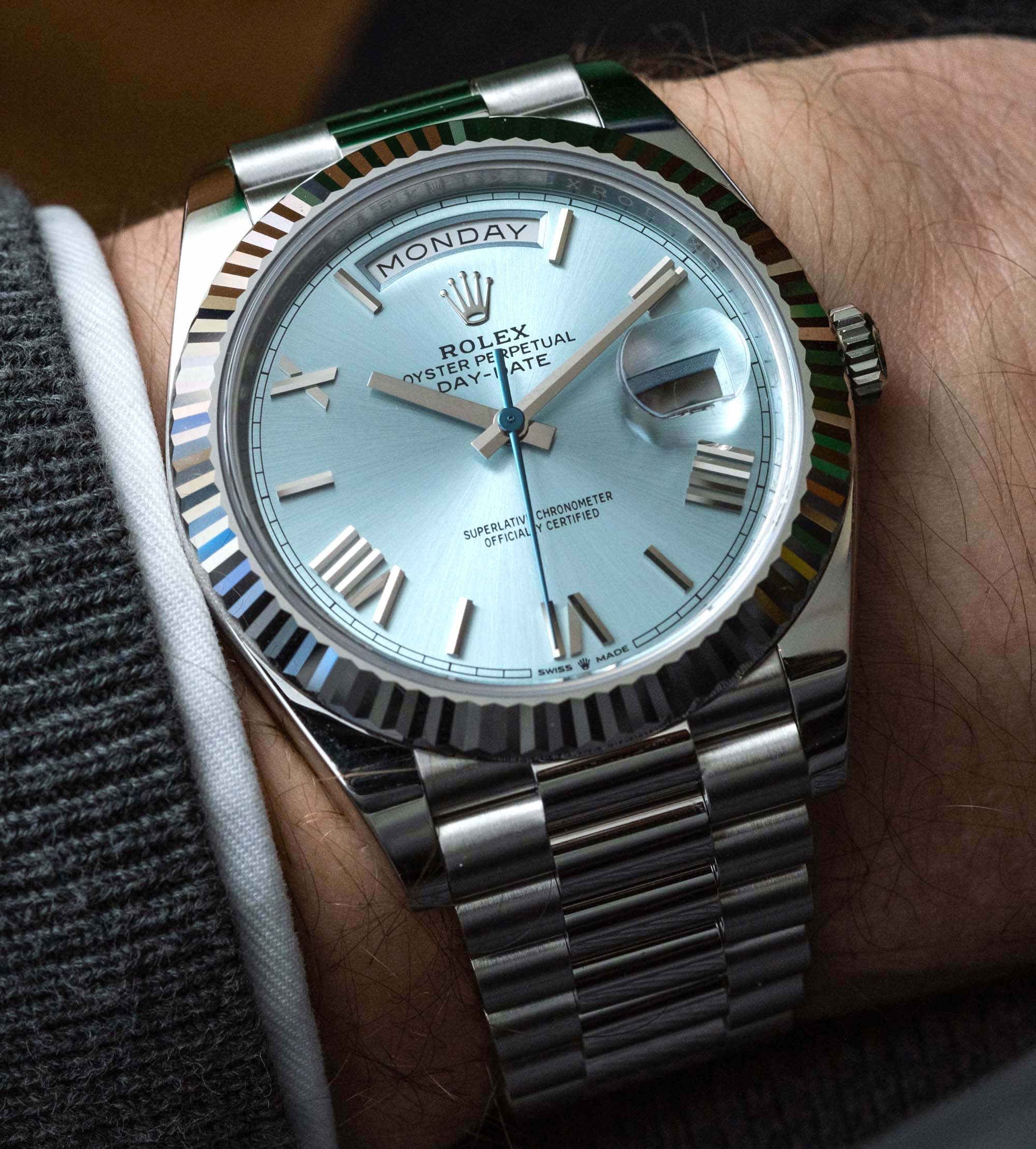
The 40mm version – easy to tell apart even on pictures from its laser-cut applied Roman hour markers.
As far as I know, for all of those eight decades, fluted bezels have exclusively been crafted from 18k-gold, and no other material. If you saw a Rolex with a fluted bezel, you knew it was 18k yellow gold, 18k white gold, or Everose gold. There have been so-called engine-turned bezels on Air-King, Datejust, and other references crafted from steel, and although those also featured some polished surfaces and grooves around, none of them were true fluted bezels — and you wouldn’t mistake an engine-turned bezel for a fluted one. By contrast, platinum bezels on Rolex watches have always been either domed, gem-set, or graduated with raised and polished numerals. You didn’t forget the platinum bezel Yacht-Master models, did you?
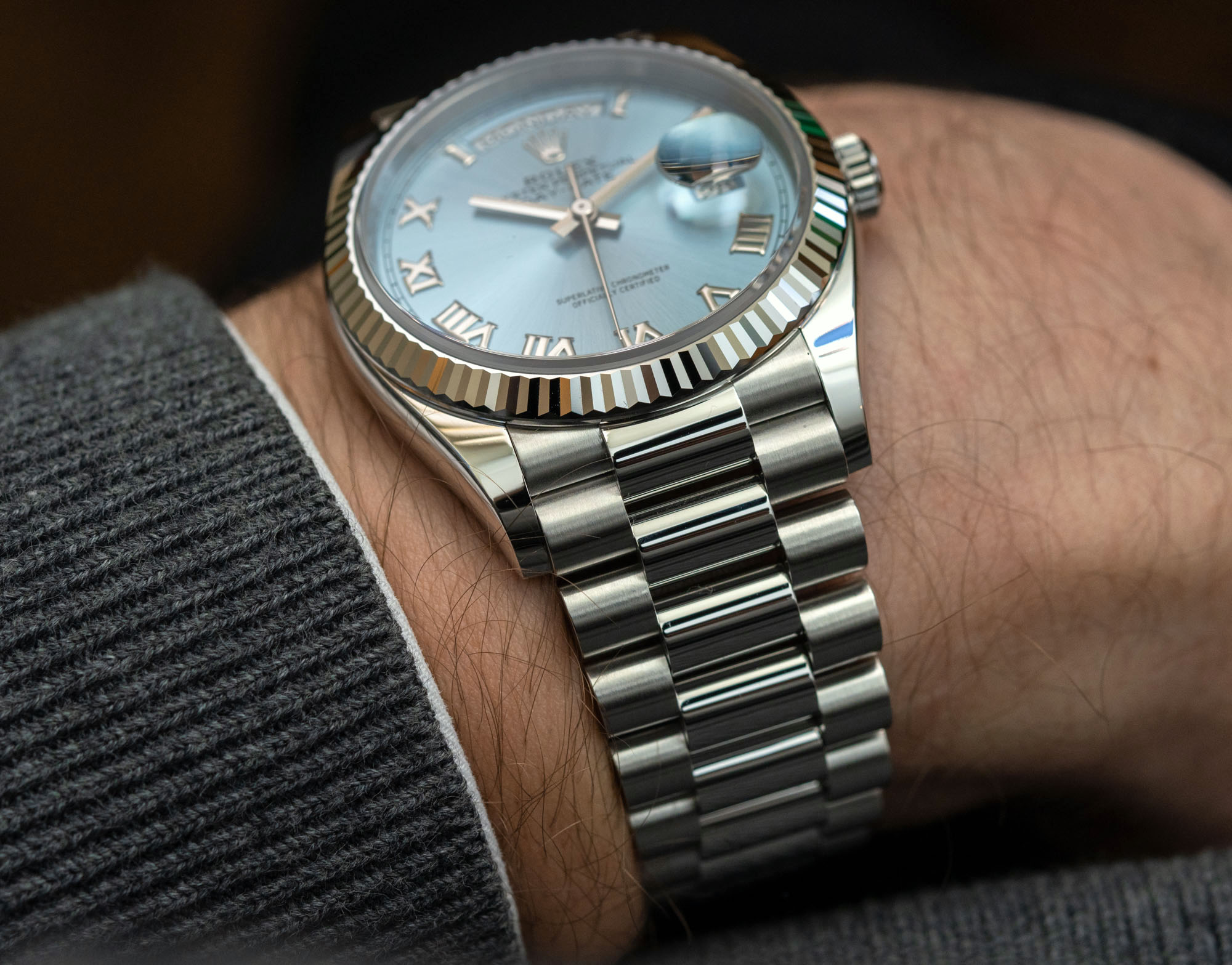
Now, that history of all-gold fluted bezels is broken or, to give it a more positive spin, extended with the 2022 platinum Rolex Day-Date 36 and platinum Rolex Day-Date 40 watches. Fans of the Day-Date 36 (count me in) have certainly noticed upon the 2019 Day-Date 36 update that the platinum variant of the smaller model has been discontinued. Well, the Day-Date 40 is, at last, joined once again by a Day-Date 36 in platinum…
…And here comes the news: the smooth bezel present on platinum Rolex watches since the mid-1900s has now been retired. The new Day-Date in 36mm and 40mm are exclusively available with fluted or gem-set platinum bezels. No more smooth platinum bezels.
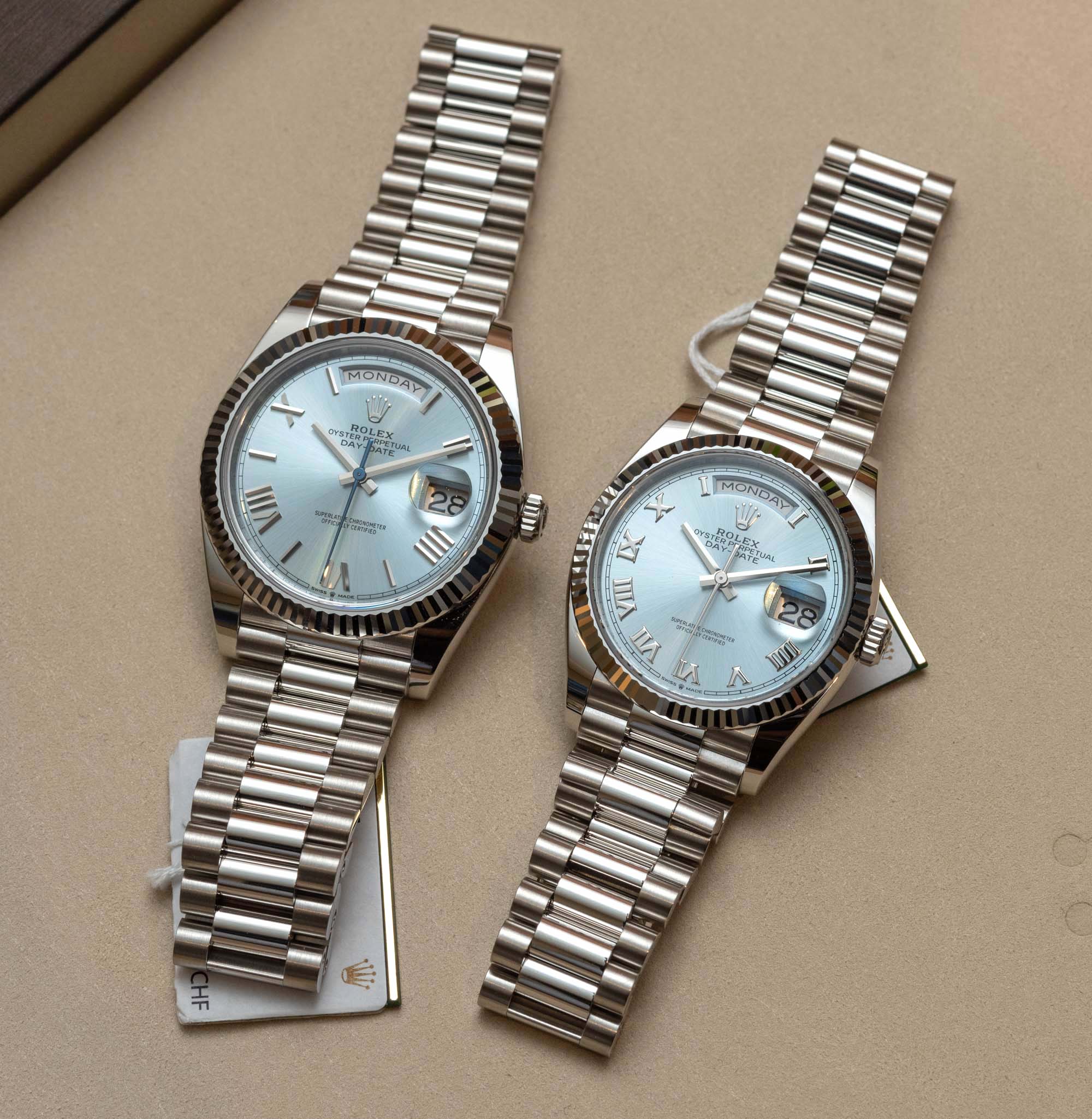
Again, because the fluted bezel has existed for so long only in 18k-gold, it is a design that, in my mind at least, has become synonymous with the material. If an ice blue dial hints at platinum, if two dots on a crown stand for Twinlock and crowns flanking “Swiss Made” at 6 o’clock refer to a latest-generation movement, then I think, it makes sense to expect that a fluted bezel stands for 18k gold.
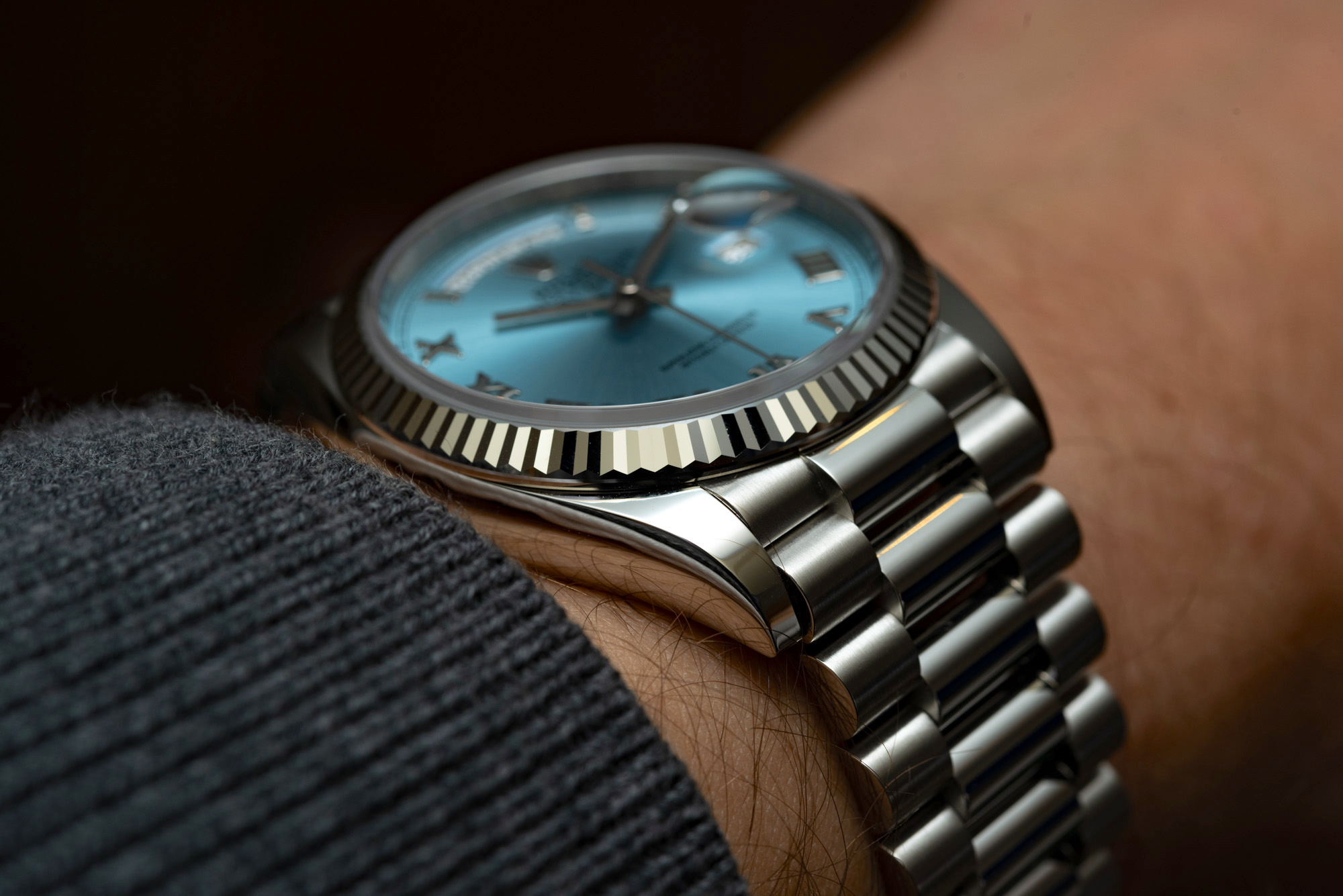
Rolex sees it in a different light and, frankly, its take makes sense — even easing the stirred soul of this fluted bezel fan. Basically, the fluted bezel in platinum was realized because it always should have been around. The Day-Date debuted in both gold and platinum right at the launch of the collection and, had the know-how existed, it would have had a platinum fluted bezel on it right from the start. Now that the manufacturing technology exists, Rolex “fixes” this inconsistency, and the Day-Date in platinum comes with a fluted bezel.

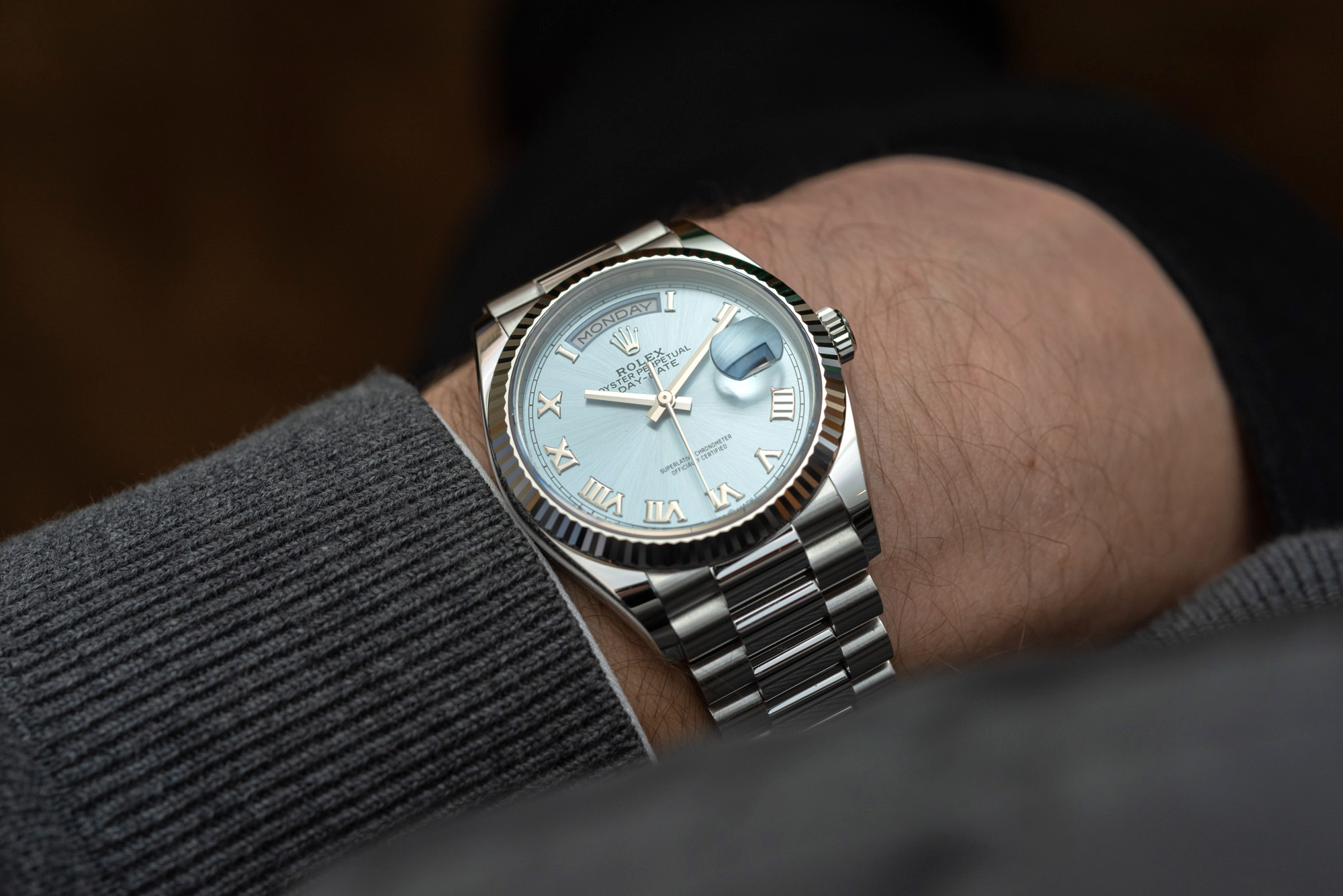
A good analogy from the Rolex world of “universal features versus technological limitations” is this: The original Sea-Dweller of 1967 should have had a cyclops magnifier on its plexiglass front over the date window, but it couldn’t combine the cyclops with the pressure resistance required from that watch. It caused structural weaknesses in the frontal element and ultimately caused it to shatter before reaching the desired depth rating, and so the cyclops was omitted and the front of the Sea-Dweller remained cyclops-free for 50 years. Again, Rolex “fixed” that in 2017 when it updated the Sea-Dweller with the cyclops magnifier, once again rooting out inconsistencies between different watch collections. If it has a date, it has to have a cyclops, and if it’s a precious metal watch, it has to have a fluted bezel. See?

The concealed folding Crownclasp remains one of the classiest and nicest executions among folding clasps.
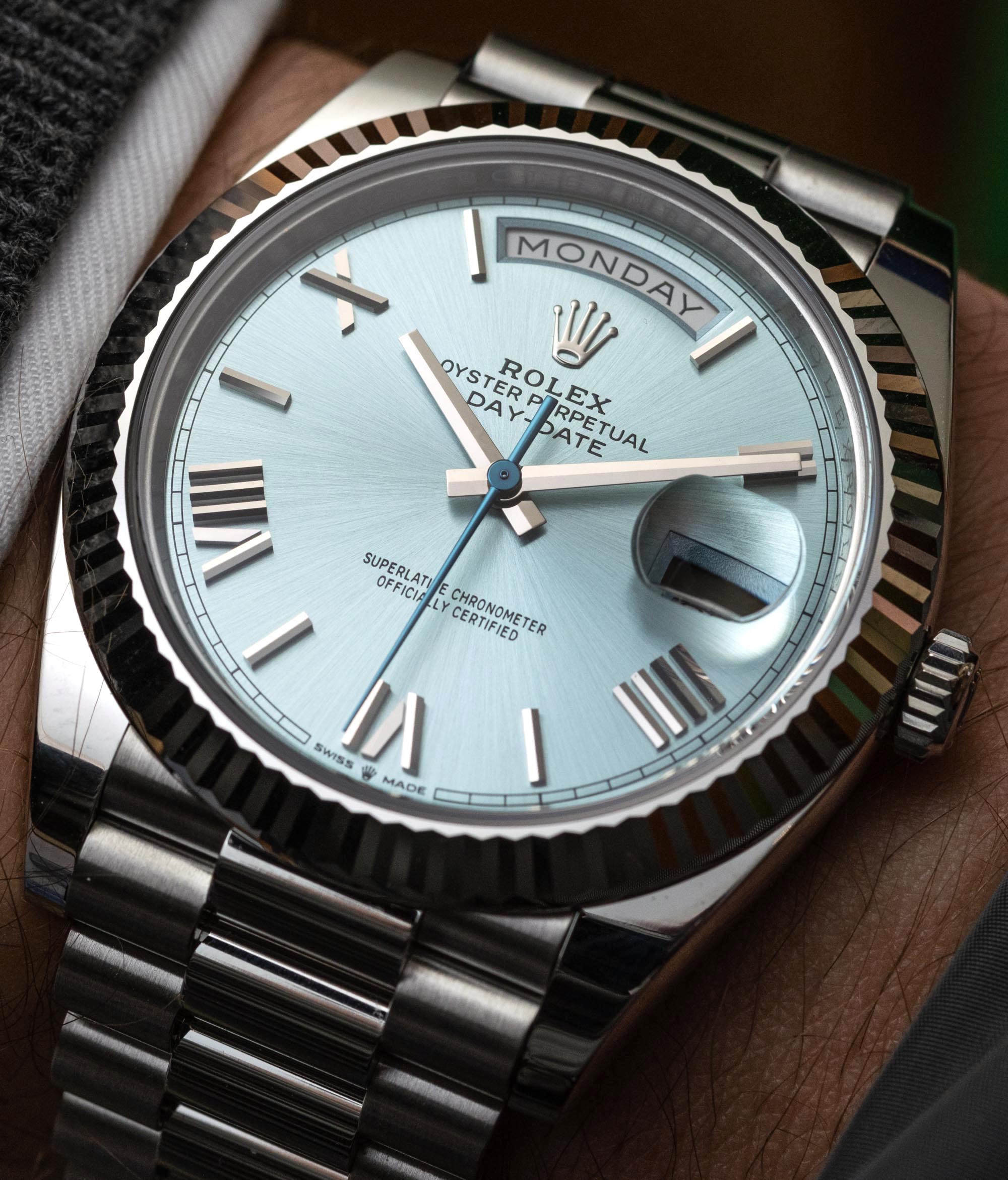
And so that is why the platinum bezel exists — because it was always meant to be. So, what took so long? For a long time, “everyone” believed that a platinum fluted bezel was impossible to fabricate. Why? Because platinum is a hateful material to work with. It’s soft and malleable like butter, but it is also very dense and gathers heat like it’s nobody’s business. Shaping platinum is like shaping butter with a knife: It takes force to push the knife through and, as you proceed, the butter melts and sticks to it while also refusing to take a sharp, defined form. Rolex worked on its in-house production techniques to enable the production of a platinum fluted bezel.
Perhaps the most fascinating thing about a fluted bezel is that each facet takes just one perfect cut to create – no additional polishing is required, or even possible.
The machine, sort of like a guilloche machine, works on a “coin” of platinum and, using extremely sharp diamond tools, makes super clean and strong cuts into the precious metal. Extreme precision and perfectly calculated force need to be used — and even with all of that, it will probably take around 10-times as long to produce a fluted bezel, not in 18k-gold but in platinum. The fabrication of other platinum components, like cases, crowns, or bracelet links, also tend to have a tenfold difficulty factor over soft and compliant gold.
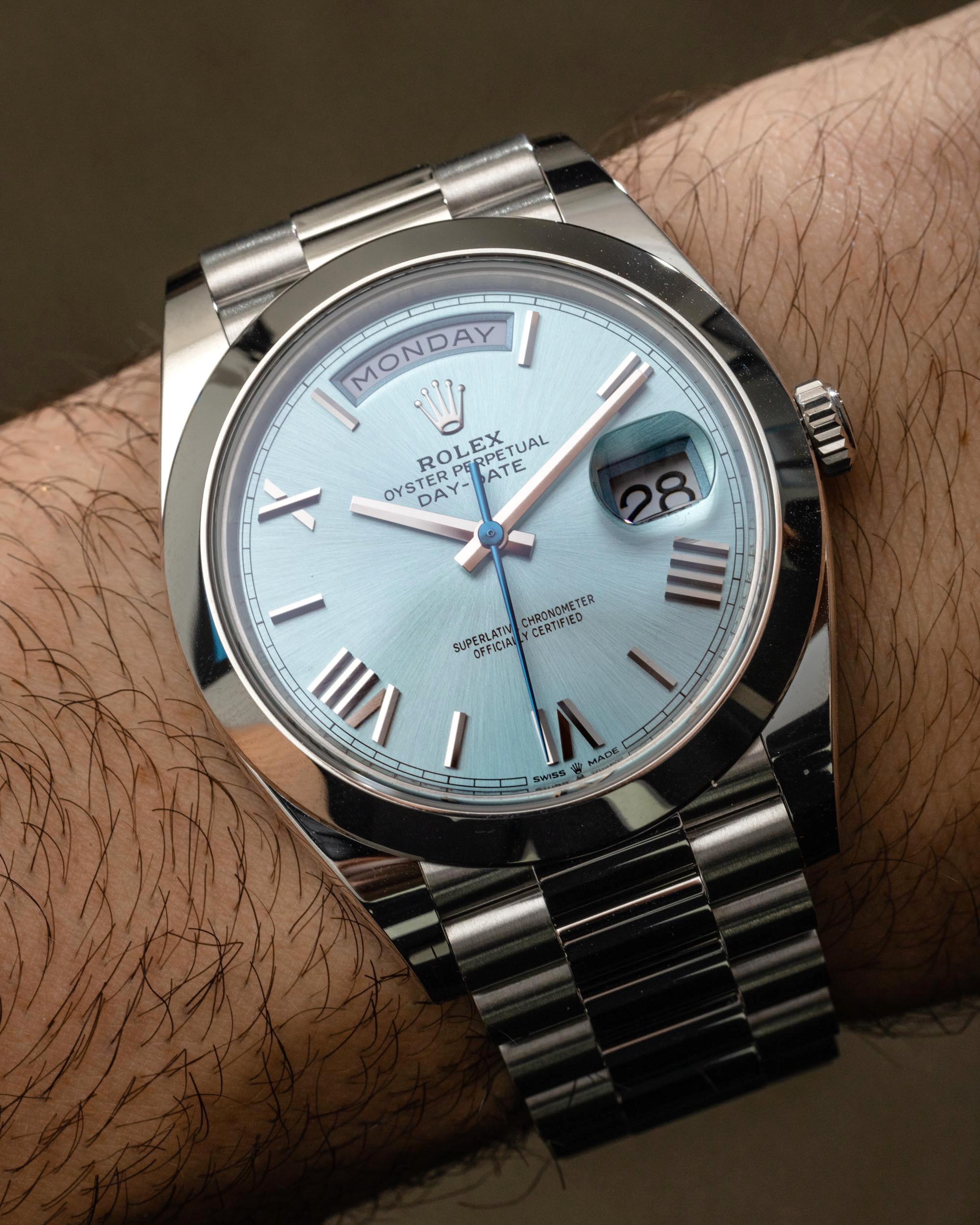

Was the extra effort worth it? That’s all for you to decide. Ariel has recently photographed the Day-Date 40 in platinum with a smooth bezel (it’s called not a “domed” but a “smooth” bezel on the Day-Date 40), a watch that is no longer made in that configuration, so you have a chance to compare the two. If you are asking me, the perfect Day-Date has always been the 36mm version in platinum, and now that it comes with a fluted bezel, I don’t think of it any less. It’s still the definitive, “I’m done with watches but I’ll get just one to wear forevermore” watch, in my eyes. It’s gloriously heavy, yet compliant around the wrist, it’s water-resistant to 100 meters, so you never have to worry about it, and it’s supposed to keep excellent time with Rolex’s latest generation, 70-hour power reserve 3255 movement. Oh, and it’s confident in its status, but — in 36mm size, at least — it is borderline low-key when compared to the “look at me!” high-status luxury watches of today. What more do you want from an “escape watch?”
Price for the Rolex Day-Date 40 in platinum with a fluted bezel is 60,400 Swiss Francs; price for the 2022 Rolex Day-Date 36 in platinum with a fluted bezel is 56,200 Swiss Francs. You can learn more, except for the price, on the brand’s website.

